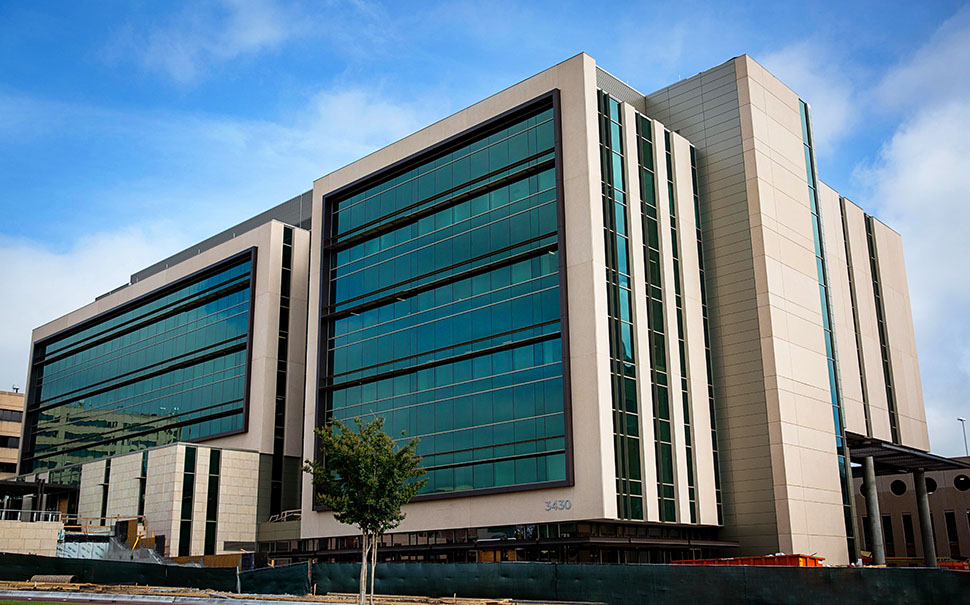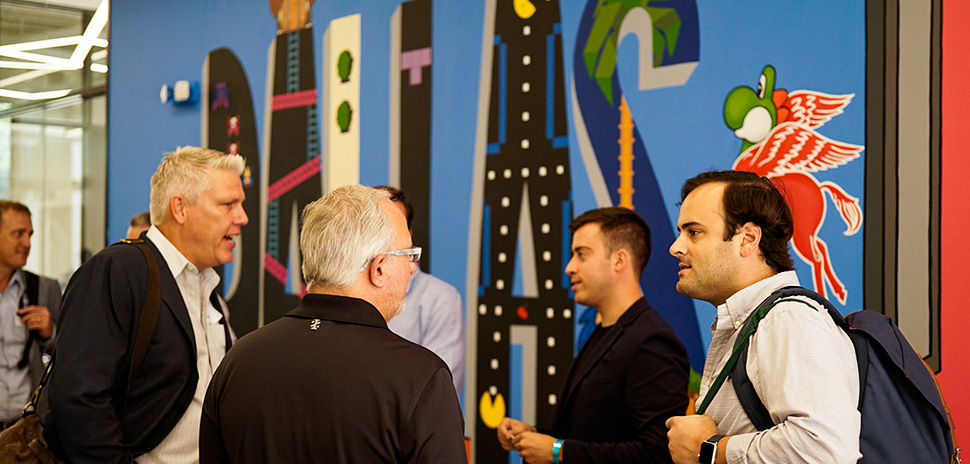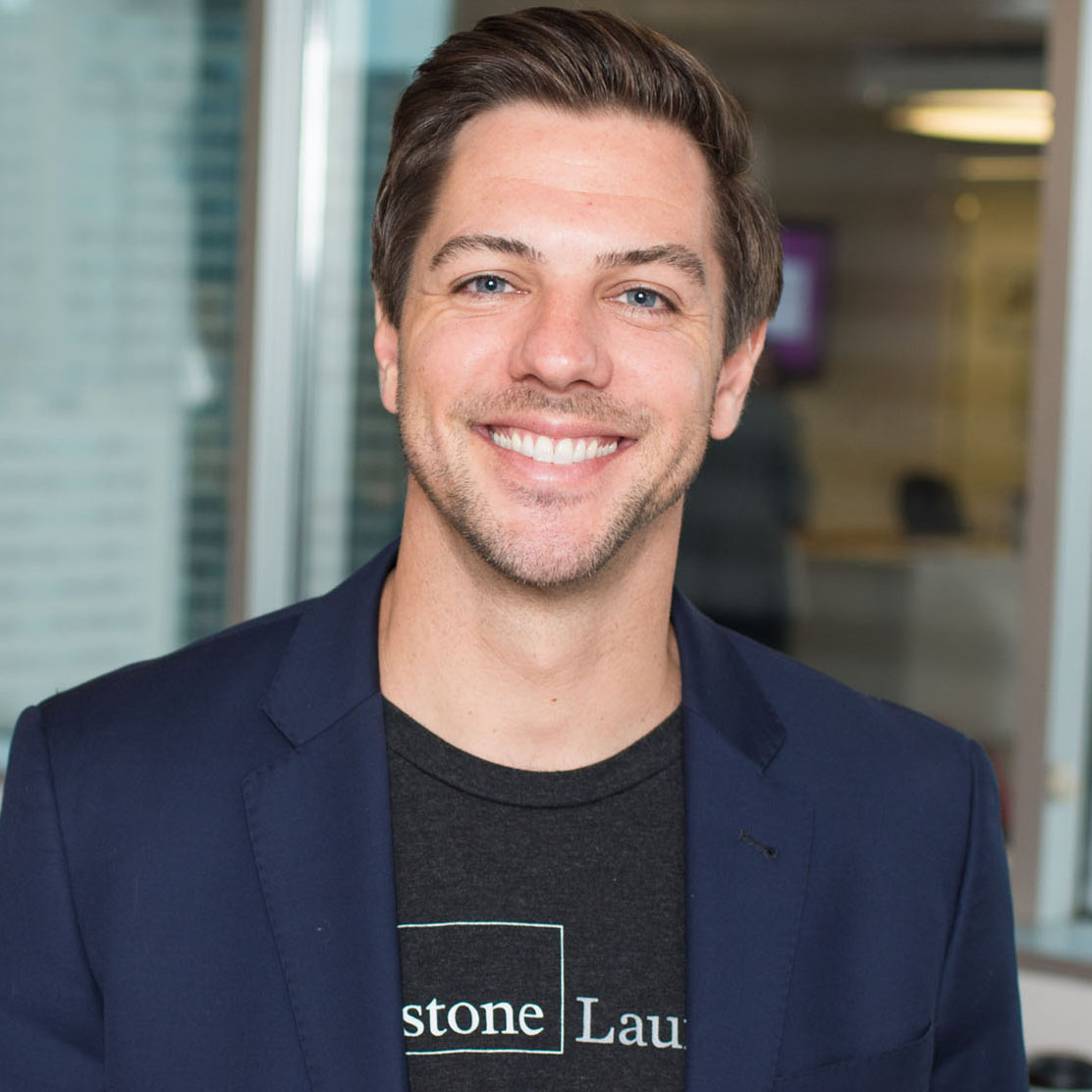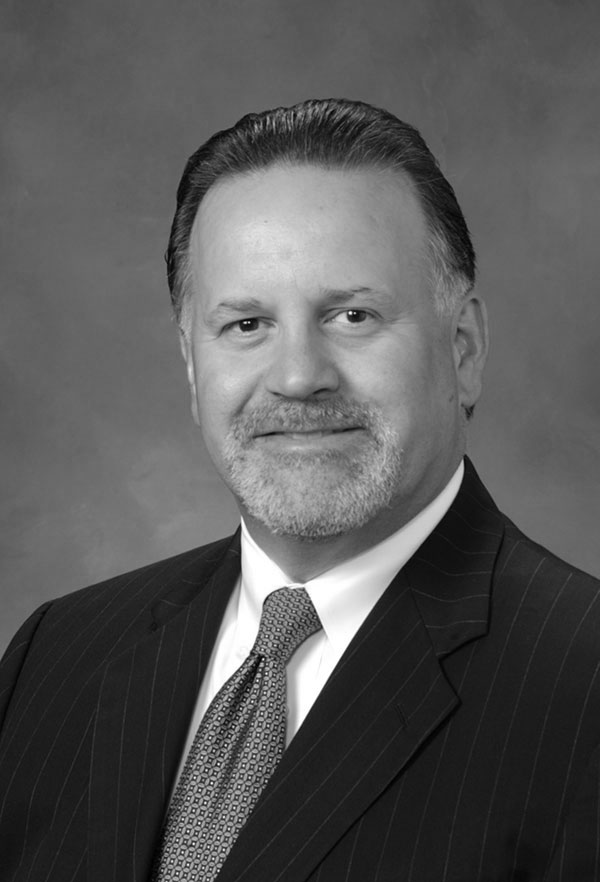In 2019 you won’t find anyone denying that Dallas-Fort Worth, from the two cities that make up its name to the suburbs and cities that help constitute the region’s nearly 8 million residents, has a thriving economy that has been terrific for individual success across myriad industries.
In some ways, its identity still maintains a modern take on the alluring frontier land, where savvy dealmakers set out to strike it big on their own. Space, resources, and enterprising mavericks have always made it a flourishing land of opportunity.
But the flip side of that coin is that it hasn’t always enjoyed the reputation as a hub for collaboration, partly thanks to our sprawling geography. Dallas Fort Worth is filled with unique cities and neighborhoods, while places with dense populations in smaller regions—like Silicon Valley, for example—are thought to be great for innovative ideas that have no choice but to bounce off one another.
There’s certainly some truth to this line of thinking, but there can also be an eventual payoff to individualized clusters of industry or research existing in different points of a larger region: Once enough of them reach a critical mass of success or innovation, they can begin to rely on each other for resources and ideas with cascading results. Some believe that throughout the region that point is being reached—and it’s time to start connecting the dots.
The promise of North Texas
When space and money collide they usually result in growth and industry. It’s an equation that Dallas-Fort Worth has enjoyed for decades. The reasons a promising young startup would want to be based in Dallas are practical and relatively obvious. The low cost of living compared to the nation’s more recognizable startup-centric cities is an immediate advantage. Relative to the other startup hubs and the technology hubs that exist in the United States, Dallas-Fort Worth is affordable, says Bryan Chambers, a director at Capital Factory, an accelerator that calls itself the “center of gravity for entrepreneurs in Texas.” Startups in cities like San Francisco have to sink a much bigger portion of their capital into rent and living expenses.
Chambers and Capital Factory are part of a growing community (well-represented by a younger generation) trying to foster and build upon Dallas’ entrepreneurial spirit. They’re joined by Health Wildcatters, a Dallas-based accelerator that provides mentorship and capital to medical innovation startups. “We strive to help you fill the gaps in your startup and wrap the right resources around it,” says Hubert Zajicek, CEO at Health Wildcatters.
It’s Capital Factory, though, that is beginning to turn heads with its new location at the Centrum on Oak Lawn. This location, according Chambers, is paramount to what it offers partners. “75 percent of the space in Capital Factory is dedicated to events and driving interactions between startups and mentors” Chambers says. “Unlike most other coworking facilities, founders regularly meet their investors and customers inside Capital Factory.” Mentorship and capital are their bread and butter, but connectivity is their “X” factor.
“I’m hopeful that Capital Factory has a breakout moment in 2019,” says Bill Sproull, president of the Richardson Chamber of Commerce and CEO of Tech Titans, a membership association for technology-enabled companies. “They’re kind of the new kid on the block here.”
Accelerators and incubators are great resources, but they are the product of startups already popping up in Dallas Fort Worth as much as they are an explanation for them arriving. So why is the startup community beginning to burgeon here? The cost of living is very low in places like Nebraska and Montana as well. The answer, according to some, is the venture capital bubbling under the surface.
Silicon Valley is understood to be the hub of venture capital being dispersed to new companies, but money can be invested where money exists. “Dallas has a lot of capital, most of which has not been active yet in the early stage technology sector,” Chambers says. But, he adds, as the startup community grows, more Dallas investors participate.
The money holders in the area may not have a reputation of funneling cash into startups, but make no mistake: The money very much is here—and it’s much easier to convince people where to invest the money they do have than it is to convince people who don’t have money to find some to invest.
That soon-to-be-active capital across the region is the result of successful industries all across North Texas. Startup culture is relatively young in Dallas, but large corporations have shown a certain comfort level here for years: Affordable living conditions within a huge population attract potential employees in droves, and most corporations know the luxury of hiring from your own backyard when scaling a company.
“With the chief experience officers and chief information officers I talk to, the No. 1 concern is talent,” says Leigh McMullen, a VP analyst for Gartner, a global research and advisory firm in sectors like IT and finance, which has an office in Irving. “You can’t achieve anything without talent. And that’s a thing we have.”
Dallas-Fort Worth is home to 22 Fortune 500 companies. Sure, those companies provide jobs and economic windfalls to their cities, but they are also a resource to the startup community. “We’re trying to bridge the gap between corporations and startups,” says Rachel Chang, a venture associate at Tech Wildcatters. These corporations can become an enormous customer base for startups, and the innovations created by startups can become pillars of how the corporations operate. “That’s where you create new value and new wealth in the economy,” Sproull says.
All innovation, however, starts at the research level. Dallas-Fort Worth has seven nationally ranked universities that are recognized for different areas of research that shape economies. The University of Texas at Arlington has thriving mechanical research and nursing programs. University of North Texas has electrical engineering and a “User Interfaces Unit.” Southern Methodist University opened an incubator in 2018 for Dallas-based startups. UTD has computer science programs that rival some of the nation’s best. Texas Christian University expanded its entrepreneurial endeavors recently with the new Neeley Institute for Entrepreneurship and Innovation. UT Southwestern ranks fifth in the world in the number of published research articles cited in third-party patent applications and its faculty has received six Nobel Prizes. The UNT Health Science Center in Fort Worth is constantly contributing to medical innovation. “Many of the assets for knowledge creation are here in abundance and growing,” Sproull says.

UNT Health Science Center School of Medicine opened its Interdisciplinary Research and Education Building in Fort Worth in October.
Density is as density does
Super connectors aren’t usually mentioned in press releases, but they’re just as vital to a region’s innovation as CEOs or investors. Victor Fishman is just one regional super connector.
In 2018, after retiring from a career at Penn State University and a stint as associate vice president of applied research at UTD, Fishman joined the Texas Research Alliance as executive director. His job is to take all the research universities in Dallas-Fort Worth and connect them—to each other, to corporations, to startups. “I start with corporations, and I work with them to help them share what they need,” Fishman says. Growth usually means new obstacles, and just because a corporation comes up with an idea doesn’t mean it employs the people with the foundational knowledge to make it a reality. Universities committed to world-class research in related fields are tremendous resources.
Fishman emphasizes that what the universities have to gain from such partnerships is beyond the financial. “In the end, money is how you keep score,” he says, “but the answer is having current, relevant problems to solve with partners who can do the implementation.”
Fishman makes a distinction between basic and applied research. On the granular level, universities conduct basic research—discovering and tracking information without a specific goal. Corporations and startups give them the tasks that turn it into applied research. They can take a university’s work from theoretical to actualized.
Fishman brings university research teams to the problems they can solve by simply knowing everyone. He hosts lunches; meets with presidents, CEOs, board members; and makes introductions. His job is to prevent anything from happening in a vacuum. Industries across the region have come together much more often recently, thanks to people like Fishman. These aren’t the forced collisions of unavoidable density. They are the voluntary collisions of relative proximity.
“I think we underrate our connectedness across the region,” Sproull says. “Instead of focusing on individual geographies like Richardson, Plano, Fort Worth, or Grapevine, there’s an underlying connectedness between people and companies that transcends those geographies.”
Chambers’ excitement over Capital Factory’s new location is no coincidence. It’s part of a bigger plan centered on connectivity. This location isn’t a headquarters: It’s a collision center. Capital Factory is focusing on events that bring together players across different levels of industry to meet. They are consciously increasing the chances of happenstance networking. “The corporations might be in different ZIP codes, but as long as the physical leaders and investors will show up to the same physical space a couple of times, that creates density,” he says.
It’s about opting in to the idea of density: With all the available capital, ideas, and established organizations at our disposal, all of a sudden a 35-minute drive doesn’t sound all that burdensome. Chambers stresses how easily he can connect a Dallas-based startup to a CEO in Frisco or Fort Worth in a way that’s far more organic than connecting with someone in Miami or Phoenix.
A lot of this takes an attitude and willingness for collaboration. Cities like Dallas and Fort Worth have always been tied up with proud historical identities. Out-of-towners would be wise not to confuse the two. That pride has led to individual success across the region, including suburbs that have blossomed to carve out their own identities through certain industries. What each city has to offer the other is becoming undeniable, and this generation of innovators seems to be taking down the walls holding back collaboration. “It has always been unique about Dallas-Fort Worth that we are so far spread out,” says Zajicek of Health Wildcatters. “It has been characterized as a weakness, but I think we’re past that.”
GET ON THE LIST Dallas Innovates, Every Day. Click to sign up for the e-newsletter.
Fishman, for example, took on a tall task when he accepted his role at Texas Research Alliance. One thing he doesn’t seem to be running into, however, is resistance. He makes a point of going to any sort of technology-based conference, meet-up, luncheon, or happy hour. The topic might be blockchain, medical innovation, or anything else, but “while they might be different topics, I’ll very often see lots of the same faces. That’s a good thing. They are coming from all across North Texas. That means they’re thinking along the same lines. That’s not how it used to be.”
Things like density and proximity are relative. Driving from the heart of Dallas to Fort Worth for something small might seem like a burden. But what if those trips to Fort Worth (or Plano or Richardson or anywhere in the region) began to eliminate the necessity of ever getting on a plane to New York or California?
If you let yourself, you might start to imagine a self-sustaining Dallas-Fort Worth. One might call such a thing an ecosystem.
An environment for interconnectivity
A word that McMullen at Gartner uses quite a bit is “ecosystem.” Once you start making the right connections, you create a ripple effect. “When you’ve got great cross-industry collaboration is when you begin to find those interesting, non-obvious connections for ideas,” McMullen says.
The Dallas Innovation Alliance released a yearlong study in November 2018 on how a Smart City Living Lab could use technology to make Dallas a more efficient and smarter city for residents and businesses. The study—the collaboration of 30 organizations across the public, private, civic, and academic sectors—was conducted in Dallas’ West End Historic District. Such an innovation-focused initiative represents more than just the sharing of information. It’s a pre-execution collaboration across sectors with agreed-upon goals.
“None of the successes the initiative has been able to accomplish would have been possible without the leadership of the city and the cross-sector support and collaboration of our partners,” says Jennifer Sanders, executive director at the Dallas Innovation Alliance. That initial connectedness increases the likelihood of favorable results—of far-reaching results.
These are initiatives meant to improve the city of Dallas, but people like Fishman see how they can harness an ecosystem. “The key [with the Living Lab study] is figuring out the strategy that will allow those to be regional resources. If we can do that, we’ll be able to move that collaborative density forward.”
Chang, of Tech Wildcatters, refers to this line of thinking as “mutually assured success.” In nature, everything in an ecosystem affects everything else. Every living species has evolved in a way that allows it to survive within its ecosystem. McMullen appreciates Dallas Fort Worth’s diversity of industry. “Ecosystems that are dominated by single culture or a single sort of business don’t thrive well,” he says.
Everything plays its part. Universities collaborating with each other and with industries are serving an elemental role: spreading information and knowledge like pollen. Startups and startup founders coming together in density-creating events increases the chances of success for at least one, which moves toward unlocking the venture capital in the region. Places like Tech Titans bring corporations together to avoid wasting time with questions others already have the answers to. “Believe me, there is demand from the Fortune 500 on how they can innovate better, faster, more efficiently, and collaborate across companies,” Sproull says.
Collisions between industries, startups, universities, and civic leaders start a chain of events that we can predict only to a certain point. But that unknown is exciting. The constant is growth. “Without both curated and accidental collisions amongst innovators you don’t get value creation,” Sproull says.
What’s left out of this conversation is competition, which has always been thought of as the backbone of free market capitalism. It’s worth noting, though, that these powerful industries across the region are the product of competition in their cities. Many of them are the victors. It’s why so many cities and neighborhoods across the region have something to offer with promising industries new and old. Chambers says real estate technology and financial technology are ripe for disruption and predicts that Dallas is on the verge of breaking out in those areas. Oil and gas remain strong in Fort Worth, but Chang says to “watch out” for its startup scene. Frisco has become a legitimate professional sports city and just signed a nine-figure deal to become the “Silicon Valley of Golf.” Irving is home to numerous Fortune 500 companies, including Exxon Mobil, Microsoft, and McKesson.
A spirit of competition will always exist wherever business occurs, but increasing the size of the ecosystem has meant taking advantage of interconnectivity and creating density. A self-starter can still come out to Dallas-Fort Worth and try to make it on his own, like the mavericks of the 19th century did. But in 2019, coming to Dallas without collaborating would be failing to take advantage of its resources.
“I think there’s a better spirit of collaboration now than there was 10 years ago,” Sproull says. Where that collaboration takes us is hard to say, but don’t be surprised if we arrive there faster than you think.
Read it online
Dallas Innovates 2019—The Magazine explores the region as a rising tech hub that will shape the future of innovation. The theme of our second annual print publication, “A Breakout Moment,” explores why now is the time for the region to grab its place in the tech universe.
![]()
Get on the list.
Dallas Innovates, every day.
Sign up to keep your eye on what’s new and next in Dallas-Fort Worth, every day.



































